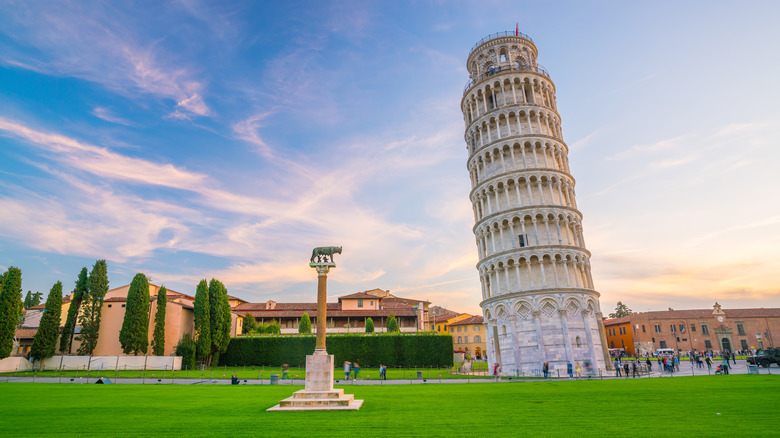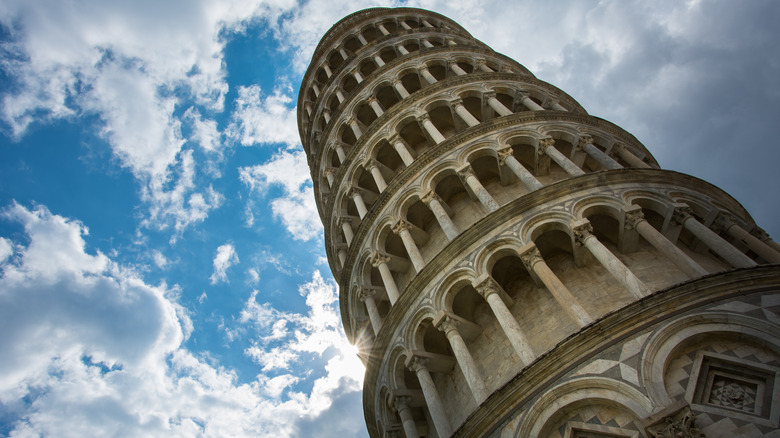Here's What's Really Inside The Leaning Tower Of Pisa
The Leaning Tower of Pisa is at the same time one of the most popular tourist attractions in Italy and one of the marvels of medieval engineering. However, it holds both of those distinctions for all the wrong reasons. That's because the tower, which is actually part of the city's cathedral complex, has famously leaned, at times almost dangerously, for centuries. Indeed, at one point in the late 20th century, according to Live Science, there were real concerns the building, now 800 years old, would fall over. The reasons for the tower's lean include the original builders' failure to take into account the loose ground on which it was built and ill-conceived efforts at fixing it later, which actually only made things worse. Fortunately, between 1999 and 2001, a team of engineers finally got everything right — at least, they hope — and probably stabilized the tower enough that it will stand for another 200 years, if not forever.
Lost in all the discussion of this is why Pisa even has a tower, leaning or otherwise, in the first place. What was the original purpose of the building, and what is inside?
There's not much of anything inside the leaning tower of Pisa
The Leaning Tower of Pisa was originally built as a bell tower, according to Britannica, which makes perfect sense. From atop the 183-foot-high tower, the clarion sounds of the bells could ring loud and clear across the plains surrounding Pisa. As such, the things for which the tower was built sit atop the building to this day, although as The Vintage News notes, ringing them is probably not the best idea.
Inside the tower is, actually, not much at all. As the tower's website notes, there is "literally nothing" inside the tower; "It's just a hollow cylinder from bottom to top." However, that's not entirely true as there's a science experiment, of a sort, inside the tower, albeit an extremely minimal and simplistic one. A weighted cylinder hangs from a wire, a few feet above the heads of tourists. It serves to illustrate just how severely the tower is leaning. If the tower were perfectly perpendicular, the cylinder would hang in the middle. However, because of the building's lean, the cylinder actually touches the interior wall, according to The Vintage News, serving as a visual demonstration of just how precarious the tower's tilt was and is.

